3 Dragons, 1 Unicorn: 4 Places That Claim to Hold the Remains of Fantasy Creatures
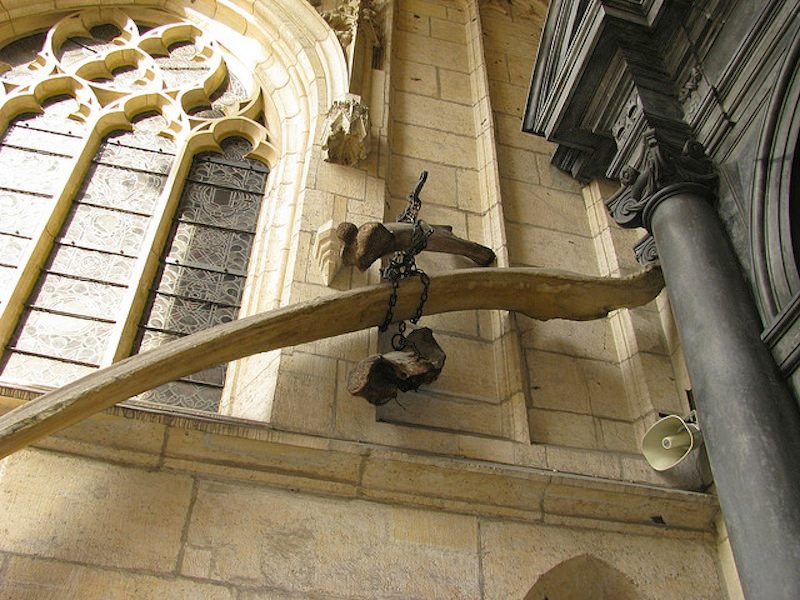
Dragon bones? (Photo katieandtommy on Flickr)
In some ways, science is a real buzzkill. Take for instance, dragons. Across countless cultures and endless centuries, humanity has told tales of great and wondrous beasts that hoard gold or breath fire or grow magical horns. Unfortunately science has long since disproved the existence of such creatures as dragons and unicorns (along with goblins, fairies, pegasus, trolls, mermaids, and a whole universe of made-up monsters). But no matter what the facts say, there are still a few places in the world that refuse to let the magic die. Take a look at the remains of three dragons, and a cave that was said to be a unicorn graveyard.
THE DRAGON RIB OF ATESSA
Atessa, Italy
 This is a dragon bone. I’m just RIB’n ya! (Photo: Tax Controller on Wikipedia)
This is a dragon bone. I’m just RIB’n ya! (Photo: Tax Controller on Wikipedia)
For a book that many people insist on reading as non-fiction, the Bible sure has a lot of dragons in it (or did before the NEW King James version edited them into other creatures). In fact, a number of saints and church figures are said to have had run-ins with dragons that needed slaying. Such was the case with the Dragon of Atessa which is said to have been slain by Saint Leucius of Brindisi: As the story goes, the saint was brought in to take care of the beast that was keeping the villages of Ate and Tixa (later joined as Atessa) apart. Leucius faced the dragon in its lair and was able to conquer it using naught but his willpower.
Today the supposed rib of this mythical dragon is still held in the The Cathedral of Saint Leucio in Atessa. The bone is held in a glass-topped case behind iron bars and certainly LOOKS like it could be the rib of a dragon. But with no frame of reference, who is to say.
BRNO DRAGON
Brno, Czech Republic
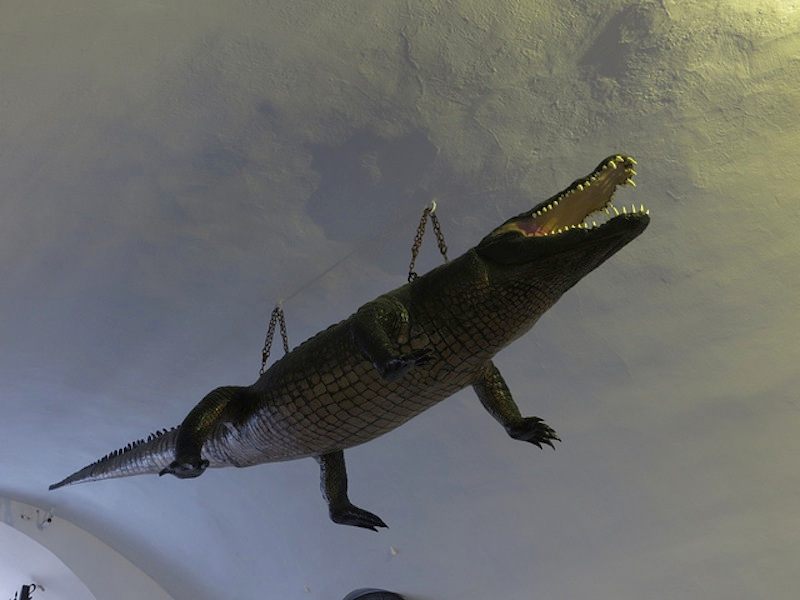
“Dragon Dundee” just doesn’t have the same ring. (Photo: Don Meliton on Flickr)
Okay, the Brno Dragon is clearly a crocodile. Nonetheless, the legend claims that it was a dragon. The legend states that a dragon was terrorizing the city of Brno (as they are want to do), and as you might expect, they could not figure out how to stop it. Finally, a foreign butcher stopped by the city and came up with a plan. They wrapped a heaping helping of lye in an animal skin and left it out like a big poison burrito. The dragon devoured the offering and promptly died. There was much rejoicing.
Now, the supposed carcass of the creature is hanging in the old Brno Town Hall, but as was previously stated, it is clearly a crocodile corpse. Many people in the city claim that is truly the dragon of the legend, but the more likely scenario is that the hanging taxidermy was a gift from a visiting ambassador.
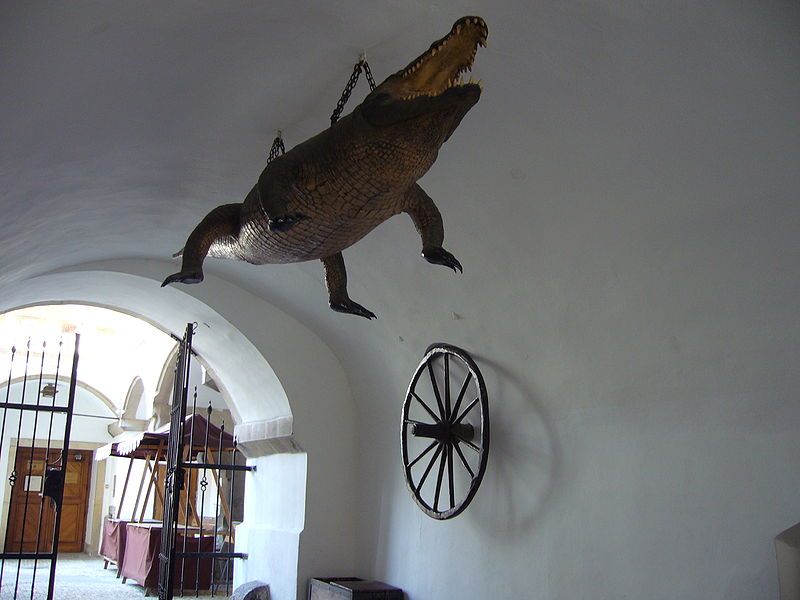
This is what happens to you when you go around eating mysterious burritos. (Photo: zarco on Wikipedia)
THE BONES OF THE WAWEL DRAGON
Krakow, Poland
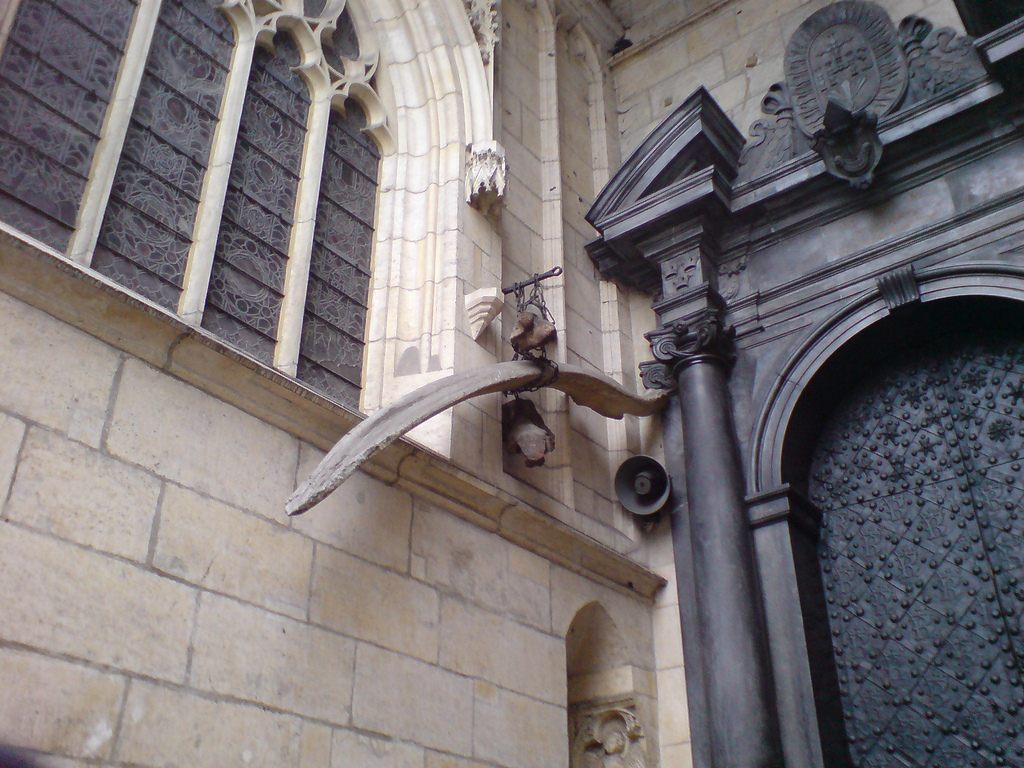
No bones about it, those probably aren’t dragon bones. (Photo: Nick Richards on Flickr)
Smok Waweleski was a dragon that is said to have lived beneath Wawel Hill in the days before the founding of Krakow. A villain, like all of his kind, Wawaleski demanded a tribute of a young woman each month, which the nearby villagers dutifully provided. One day, a local apprentice came up with the idea (possibly after talking with the butcher from Brno) to try and feed the creature a poison lamb. Because all dragons are real idiots, Wawaleski housed the whole lamb which made him so thirsty he then went to the river and drank water until he exploded. Sometimes legends are so weird they are amazing.
Apparently someone sifted through the water-logged gore and fished out some souvenirs because the modern Wawel Cathedral claims to display a jumble of the dragon’s bones. Hanging high up against one of the cathedral’s walls, the bones certainly seem big enough to have belonged to a dragon. The more likely explanation is that they are the remains of a mammoth or whale. However the bones have been hanging in the church for centuries, so the truth may never be known.
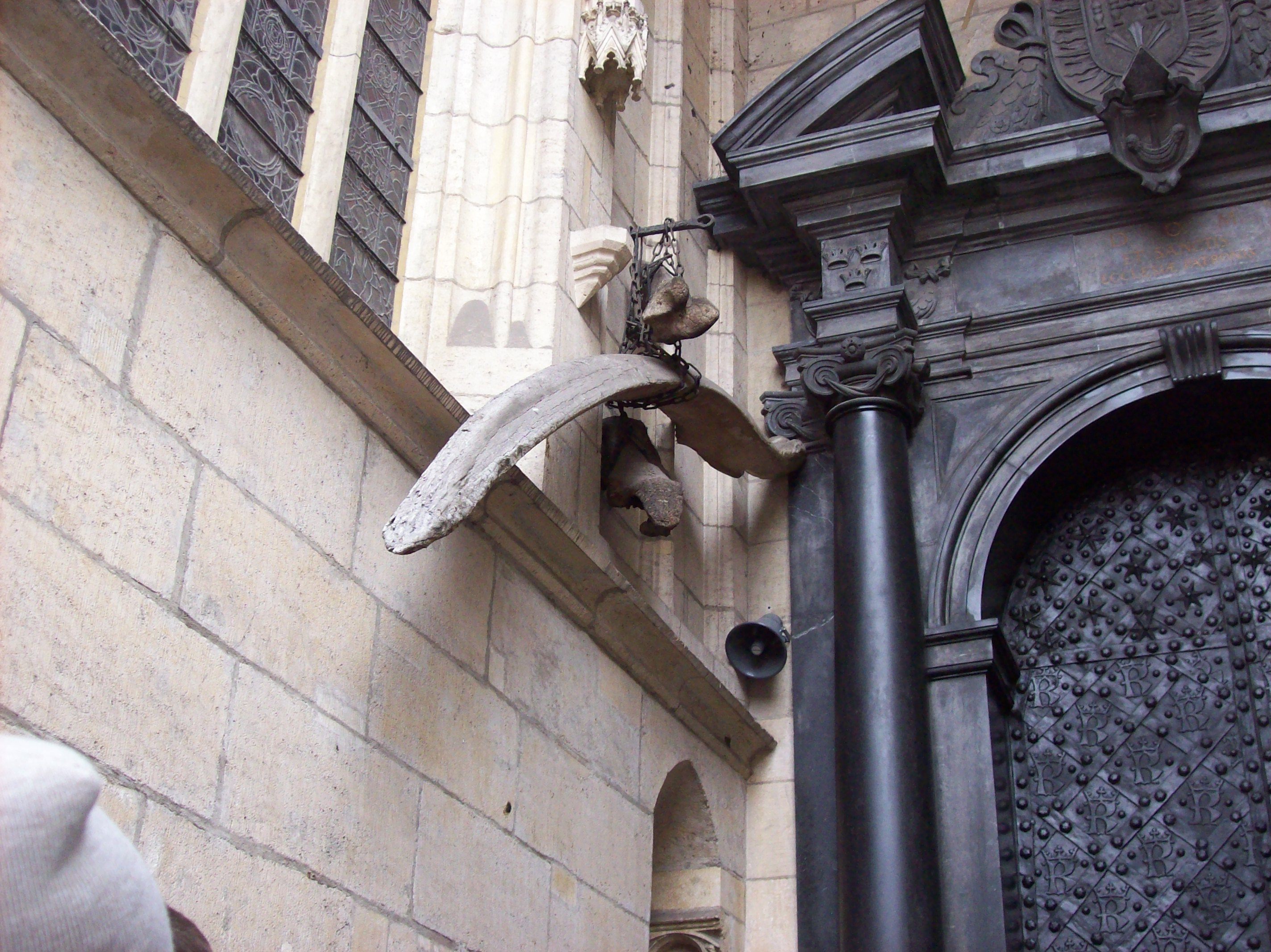
There are few things more metal in this world than dragon bones held together with black chain. (Photo: Yohan euan o4 on Wikipedia)
UNICORN CAVE
Harz, Germany
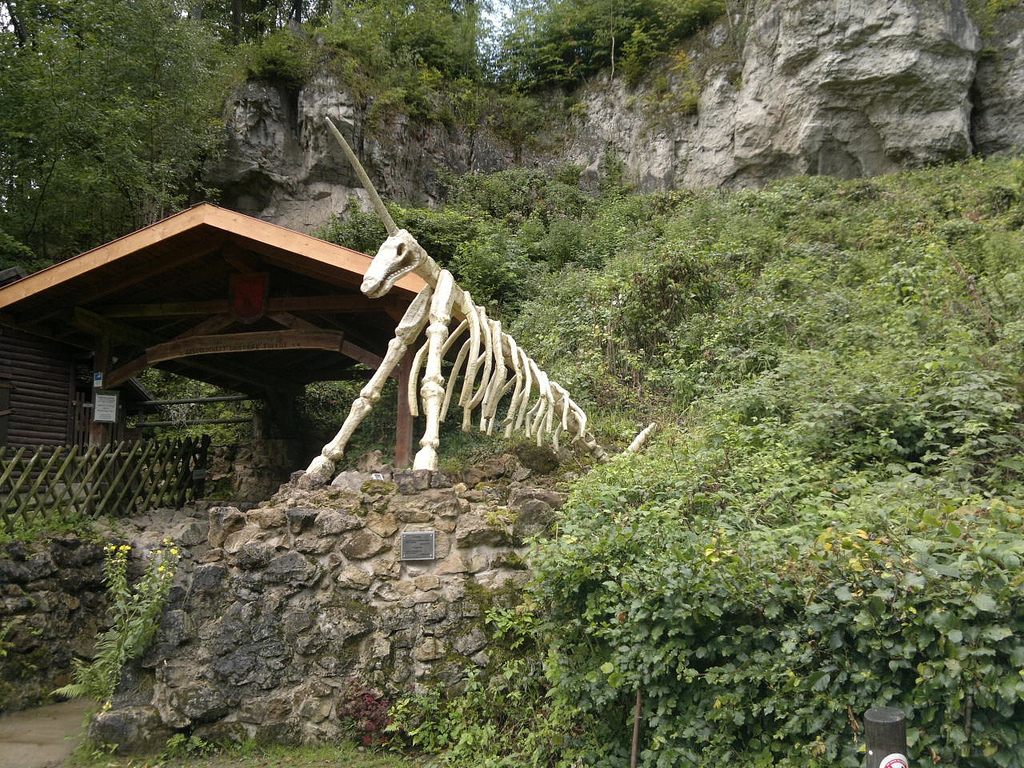
That is one grumpy unicorn. (Photo: tracy the astonishing on Flickr)
Located in Germany’s Harz Mountains, Unicorn Cave was first discovered in medieval times when the only logical explanation for all of the bones in the cave were that they belonged to magic horses. The cavern (the largest in the entire mountain range!) was first mentioned in 1541 when a chronicler visited the site and found that the locals were harvesting the rich cache of unicorn bones from the cave floor and crushing them up to make folk medicines. With our smug modern understanding we can of course look back and laugh, secure in the knowledge that they were just eating regular, un-magical animal bones.
Modern excavations have failed to turn up any trace of unicorns, but miraculously, researchers have identified the remains of dozens of other prehistoric animals. Apparently the large cave made for a perfect natural shelter. Unicorn Cave is now open as a show cave, and even has a delightful unicorn skeleton out front. It might not be magic, but it’s close.

Germany is magic. (Photo: Norbert Kaiser on Wikipedia)


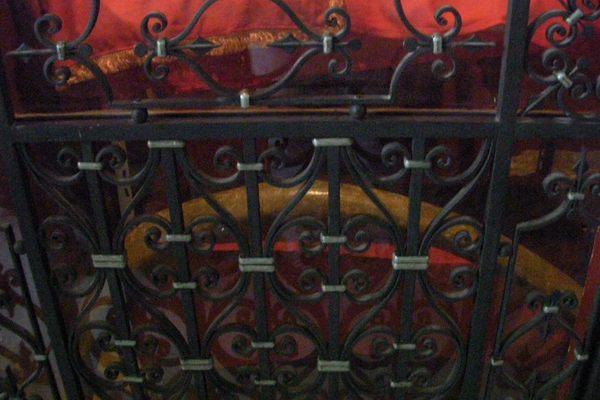








Follow us on Twitter to get the latest on the world's hidden wonders.
Like us on Facebook to get the latest on the world's hidden wonders.
Follow us on Twitter Like us on Facebook